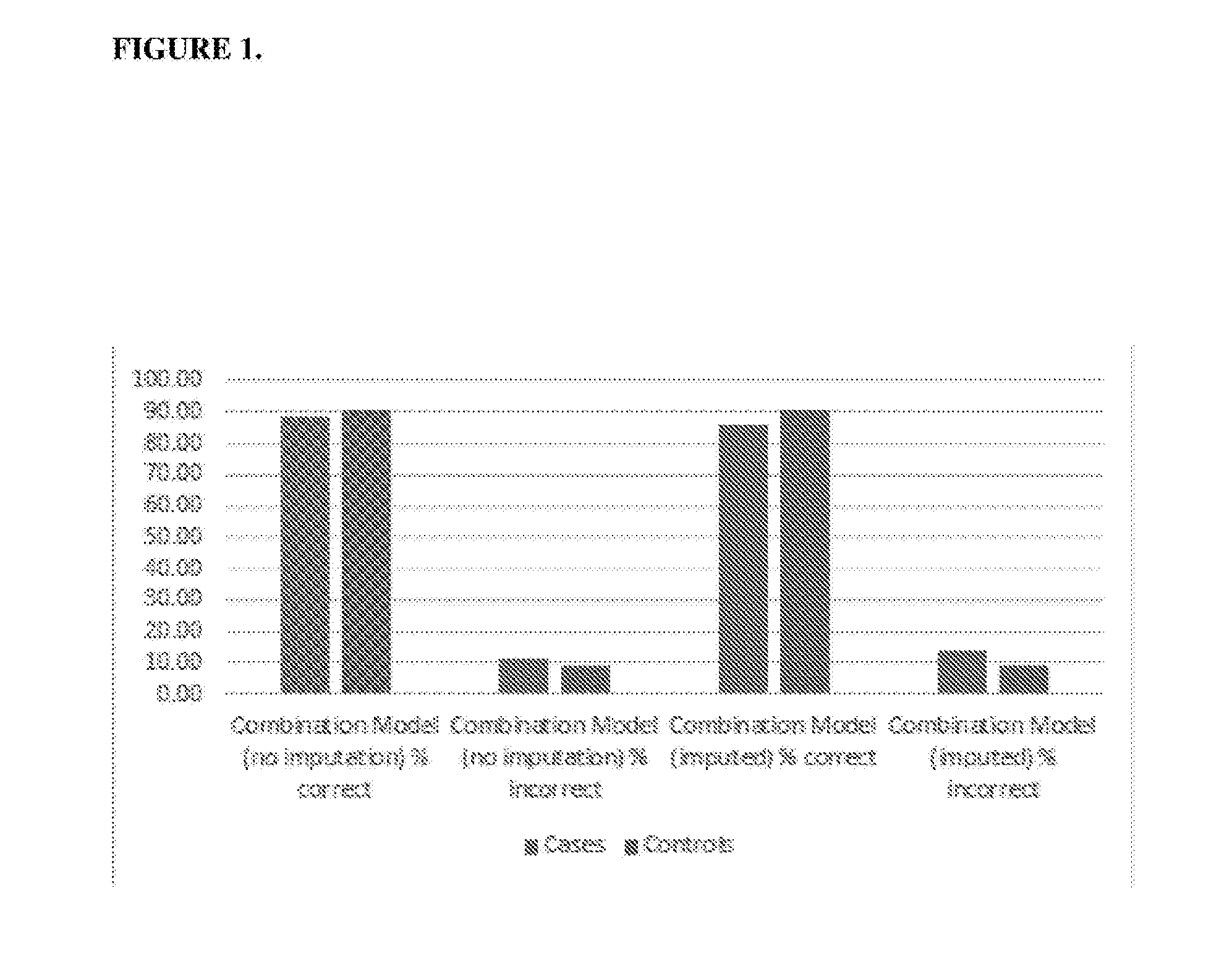Mental illness model and mental illness risk assessment test for schizophrenic psychosis
- Summary
- Abstract
- Description
- Claims
- Application Information
AI Technical Summary
Benefits of technology
Problems solved by technology
Method used
Image
Examples
example 1
Assessment Methodology
Subject Recruitment
[0101]Ethics permission for the study was obtained from the Queen Elizabeth Hospital Ethics Committee. Data from an earlier pilot study indicated that a minimum of 60 cases was needed to ensure a minimum level of significance of 90 percent. Symptomatic participants (67 cases) were recruited from ward and community settings. Diagnoses were made by DSM IV-R criteria and were verified by the DSMIV-R symptom-checklist. Pharmacotherapy of symptomatic participants remained stable during the assessment period. Persons medicated with Clozapine, Olanzapine, or anti-histamines or vitamins were excluded. Persons with substance abuse, upper respiratory tract infections, intellectual, visual or auditory disability or documented history of head injury or extrapyramidal or motor abnormality of ocular, forearm or hand muscle movements were also excluded.
[0102]Asymptomatic mentally healthy control participants (67) were collaterally randomly selected and recr...
example 2
MIRAT Assessment of Symptomatic and Asymptomatic Subjects
[0129]Receiver operating characteristic (ROC) analysis and odds ratio analysis was carried out on the variables described above in Example 1 as measured in the 67 selectively medicated symptomatic subjects and 67 asymptomatic subjects described in Example 1.
[0130]These analyses identified a number of variables that were capable of differentiating cases from controls by demonstrating an area under the curve and other parameters of sufficient significance to consider them to be biomarkers. These variables were classified into five main categories (domains) and one supplementary category (domain). Summarised values for a five domain model, including the five main domain, and six domain model, including these five main domain and the supplementary domain (middle ear domain), are shown in Table 2. These categories were neurotransmitters, oxidative stress, nutrition, visual processing, auditory processing, and measures of middle ear...
example 3
Exemplary Clinical Application of the Multi-Domain MIRAT Model and MIRAT Test
[0141]The following is provided, by way of example only, as a means of employing a MIRAT test in a clinical setting.
[0142]A clinician (such as a general practitioner) registers with a dedicated MIRAT or other named website, submits their credentials, obtains patient consent, and orders patient blood and urine tests. The clinician also completes a symptom check-list and undertakes a number of neuro-sensory and cognitive tests. The results of the blood and urine tests for the patient will be supplied to both the clinician and a central body or authority maintaining and holding MIRAT test information, and will be entered onto the website, together with the results of the cognitive tests.
[0143]Two algorithms or calculations are then applied to the test results by the central body or authority holding the MIRAT test information, one algorithm to provide a risk prediction score and diagnostic accuracy for the pat...
PUM
 Login to View More
Login to View More Abstract
Description
Claims
Application Information
 Login to View More
Login to View More - R&D
- Intellectual Property
- Life Sciences
- Materials
- Tech Scout
- Unparalleled Data Quality
- Higher Quality Content
- 60% Fewer Hallucinations
Browse by: Latest US Patents, China's latest patents, Technical Efficacy Thesaurus, Application Domain, Technology Topic, Popular Technical Reports.
© 2025 PatSnap. All rights reserved.Legal|Privacy policy|Modern Slavery Act Transparency Statement|Sitemap|About US| Contact US: help@patsnap.com

